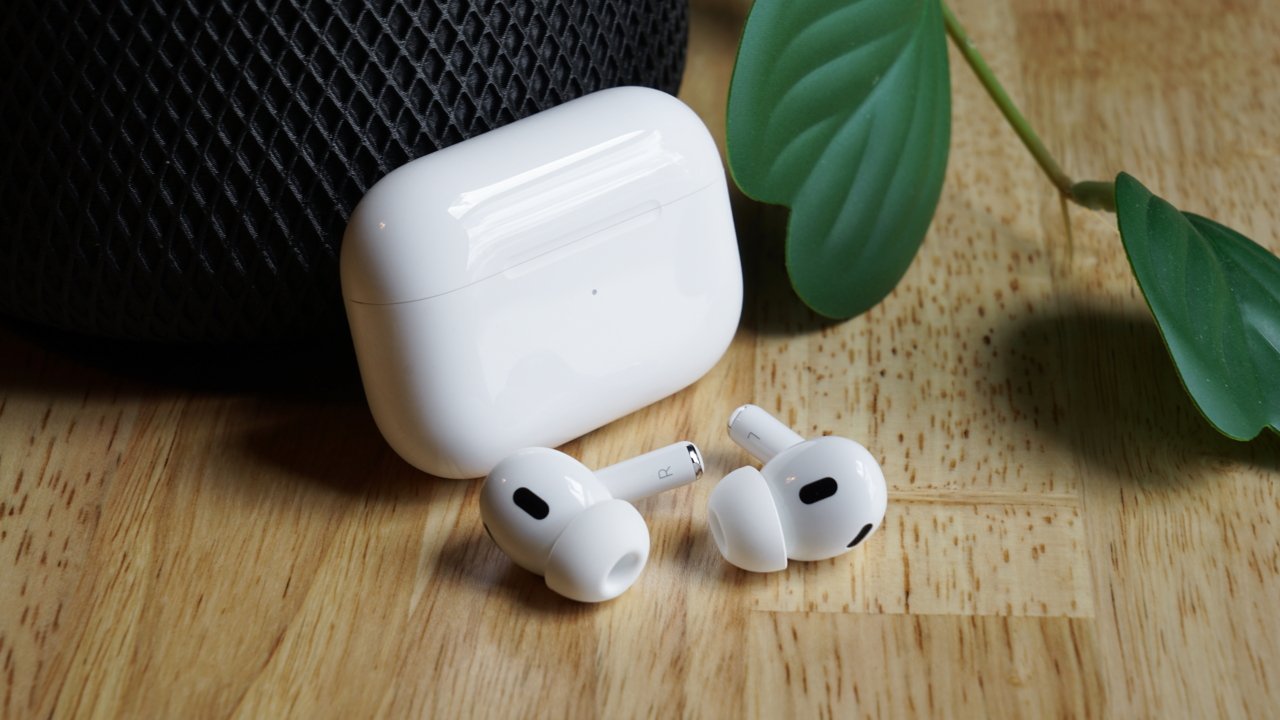目まぐるしく変化する現代社会において、静寂と平穏を求めることはかつてないほど重要になっています。そこで、多くの人がリラックス、集中力、睡眠のために頼るホワイトノイズの出番です。ホワイトノイズは、可聴周波数をすべて含む一定の音として定義され、周囲の雑音を遮断し、心地よい聴覚環境を作り出すのに役立ちます。この記事では、グリーンノイズとホワイトノイズの魅力的な世界を掘り下げ、特に赤ちゃんと大人にとってのメリットを探り、補聴器との関連性についても解説します。また、聴覚体験を向上させるための、YouTubeで人気のホワイトノイズ関連リソースもいくつかご紹介します。
🚀 この投稿をナビゲート
以下もご興味があるかもしれません:
パート 1. ホワイト ノイズとは何ですか?
ホワイトノイズとは、人間の耳に聞こえるすべての周波数帯域を均一な強度で再生した音です。チューニングされていないラジオやテレビで聞こえる雑音に似ています。この音は、約20Hzから20,000Hzの範囲の可聴周波数帯域全体に均一に分布しているのが特徴で、ホワイトノイズの一般的な用途は以下のとおりです。
睡眠補助:休息を妨げる可能性のある突然の騒音を消し、眠りにつくために、ホワイトノイズ マシンやアプリを使用する人が多くいます。
集中力の向上:職場や勉強の環境では、ホワイト ノイズは気を散らす音を遮断して集中力を高めるのに役立ちます。

Diamond X1 - Bluetooth搭載の最高の補聴器
新人価格
249.99ドル309.99ドル
- ✔ クリアな聴覚を実現するアダプティブサウンド モード。
- ✔ 通話とストリーミング用の Bluetooth。
- ✔ アプリ制御のカスタマイズ可能な調整。
- ✔ 充電可能で急速充電。
- ✔ 軽度から中程度の難聴に最適です。
ホワイトノイズの使用は、特に騒音の多い都市部に住む人々の間で人気が高まっています。都市部では予期せぬ音が睡眠や集中力を妨げる可能性があるからです。一定の音は脳がこれらの雑音を遮断し、より安定した聴覚環境を作り出すのに役立ちます。
パート2. ホワイトノイズとグリーンノイズ
1. ホワイトノイズの特徴
ホワイトノイズは、低周波から高周波まで幅広い周波数範囲をカバーします。背景音をかき消す効果があり、以下のような様々な環境に最適です。
オフィス:気を散らすものを減らして集中力を維持するのに役立ちます。
睡眠環境:睡眠を妨げる可能性のある音を遮断します。
ホワイトノイズの魅力は、一定の聴覚的背景を作り出す能力にあります。この特性により、ホワイトノイズは周囲の環境にシームレスに溶け込み、時間の経過とともに目立たなくなるため、落ち着いた雰囲気を求める人にとって有益です。
2. グリーンノイズの特徴
一方、グリーンノイズは、自然界によく見られる、より心地よく自然な周波数を強調します。ホワイトノイズと同様のエネルギー密度を持ちながら、中音域の周波数を強調することで、より柔らかく心地よい音を生み出すノイズの一種として定義されています。
自然な音質:多くの人が心を落ち着かせると感じる、水の流れや風が葉を揺らす音を模倣します。
リラクゼーションと瞑想:ヨガや瞑想など、精神的な健康を促進する実践に最適です。
グリーンノイズは、多くの場合、平和とリラックス感を促進するため、心地よい自然の音でリラックスしたい人に好まれる選択肢となっています。
3. グリーンノイズとホワイトノイズの比較
どちらの音も目的が異なり、聞き手に与える効果も異なります。
周波数範囲:ホワイト ノイズは、グリーン ノイズに比べて周波数範囲が広く、グリーン ノイズはより柔らかく、中音域の周波数に重点が置かれている傾向があります。
感情的な反応:多くの人は、グリーン ノイズの自然な音質により、よりリラックスできると感じますが、ホワイト ノイズはより実用的であると認識されることが多いです。
使用例:ホワイト ノイズは睡眠補助や作業環境でよく使用されますが、グリーン ノイズはリラクゼーションやマインドフルネス活動に適しています。

「ホワイト ノイズ vs. グリーン ノイズ」や「グリーン ノイズ vs. ホワイト ノイズの違い」などのキーワードを使用すると、2 種類のノイズが異なる聴覚ニーズを満たし、さまざまな好みや状況に対応していることがわかります。
パート3:ホワイトノイズの利点
1. 乳児へのメリット
ホワイトノイズは特に赤ちゃんに効果的です。その仕組みは以下のとおりです。
睡眠促進:ホワイトノイズの一定の音は、赤ちゃんが子宮の中で聞いている音を模倣し、心地よさを与え、眠りを早めます。多くの親が、赤ちゃんを落ち着かせ、眠りに誘う優しい音を出す、乳幼児向けに特別に設計されたホワイトノイズマシンやアプリを活用しています。
驚愕反射の軽減:ホワイトノイズは、赤ちゃんを驚かせてしまうような突然の音を遮断することで、赤ちゃんを落ち着かせることができます。この効果により、より安定した睡眠環境が整えられ、赤ちゃんはより安らかに眠ることができます。
研究によると、睡眠中にホワイトノイズにさらされた乳児は目覚める回数が少なくなり、泣くことも少なくなる傾向があり、親にとってもより安らかな夜を過ごせることにつながることが分かっています。
2. 大人にとってのメリット
大人にとっても、ホワイトノイズは有益です。
睡眠の質の向上:多くの成人は、邪魔な雑音を遮断するためにホワイトノイズを使用しています。ホワイトノイズは、より深く安らかな睡眠につながります。そのため、「睡眠のためのホワイトノイズ」という検索キーワードが人気を集めています。研究によると、ホワイトノイズマシンを使用する人は睡眠の質が向上し、不眠症の症状が軽減されたと報告されています。
集中力の向上:騒がしいオフィスや忙しい環境では、ホワイトノイズは集中力を高め、気が散る要素を減らすのに役立ちます。ホワイトノイズは一定の音の背景を提供することで、脳が無関係なノイズを遮断し、生産性を向上させます。
パート4. ノイズの他の色
ホワイトノイズに加えて、さまざまな目的に役立つさまざまな「色」のノイズが存在します。

1. ピンクノイズ
定義と特徴:ピンクノイズは低周波に重点を置いており、より柔らかく、耳に心地よい音を作り出します。雨音や波の音といった自然の音を模倣します。
用途:リラックス効果と睡眠改善に最適です。ピンクノイズは脳波をゆっくりにすることで睡眠の質を高めることが研究で示されています。
2. ブラウンノイズ
定義と特徴:ブラウン ノイズは、主に低周波数に焦点を当てて高周波数をさらに低減し、遠くの雷に似た深くゴロゴロとした音を作り出します。
用途:深いリラクゼーションとストレス解消に最適です。ブラウンノイズは、瞑想や不安の緩和に特に効果的だと感じる人が多いようです。
3. ブルーノイズ
定義と特徴:ブルー ノイズは高周波を強調し、オーディオ エンジニアリングやノイズ低減技術でよく使用されます。
用途:特定の作業環境における注意力の向上に役立ちます。より顕著な高周波音を必要とする用途のサウンドデザインにも使用できます。
4. バイオレットノイズ
定義と特徴:バイオレット ノイズは主に高周波で構成されており、サウンド セラピーで使用されることもあります。
用途:勉強や複雑なプロジェクトの作業など、集中力を必要とするタスクに適しています。
ノイズの色ごとに独自の特徴があるため、どのタイプが自分のニーズに最も合致するかを個人が特定することが重要です。
パート5:補聴器ユーザーにとってのホワイトノイズの利点
1. 補聴器の役割
補聴器は、音を増幅することで聴覚障害のある方を支援します。背景ノイズを除去し、重要な音を強調することで、ユーザーは会話や活動にさらに集中できるようになります。Cearvol のような最新の補聴器は、様々な種類の音を聞き分けることができる高度な技術を搭載しており、騒がしい環境でも会話に集中しやすくなります。
2. ホワイトノイズと補聴器の相乗効果
ホワイトノイズを使用すると、補聴器ユーザーの聴覚体験がさらに向上します。
- 背景ノイズのマスキング:ホワイトノイズは、気が散る背景音をマスキングし、会話や重要な音に集中するのに役立ちます。これは、背景ノイズが聴覚信号を圧倒してしまうような社交的な場や混雑した環境で特に効果的です。
- 耳鳴りの緩和: 耳鳴りは難聴と関連しており、ホワイトノイズは耳鳴りや耳鳴りを覆い隠すことで症状を緩和します。これにより生活の質が大幅に向上し、持続的な音に邪魔されることなく日常生活を送ることができます。
- より良い睡眠を促進:補聴器をご使用で睡眠に問題のある方にとって、ホワイトノイズは、邪魔な音を遮断することで、より穏やかな睡眠環境を作り出すことができます。ホワイトノイズの持続性により、ユーザーはより容易に眠りにつき、より深い睡眠サイクルを維持することができます。
ホワイトノイズと補聴器を組み合わせることで、難聴を管理し、全体的な聴覚体験を改善するための包括的なアプローチが実現します。
パート6. ホワイトノイズに関するYouTubeリソース
1. ホワイトノイズ動画の人気
YouTubeは、ホワイトノイズやその他の環境音にアクセスするための人気プラットフォームとなっています。リラックスや睡眠に適した音を探すために、YouTubeでホワイトノイズを検索する人が多くいます。様々な好みに合わせた動画が用意されているため、ユーザーは自分に合った音を簡単に見つけることができます。
2. 推奨されるビデオの種類
クラシックホワイトノイズ:ファンの音や静電気など、一定の音を収録した動画です。伝統的なホワイトノイズを体感でき、特に睡眠に効果的です。
自然音:海の波、雨の音、森の雰囲気など、自然の音を紹介する動画。これらの音は心を落ち着かせ、リラックスするのに最適です。
睡眠と集中力を高めるプレイリスト:ユーザーがより早く眠りに落ちたり、仕事や勉強に集中力を維持したりできるように設計された、厳選されたプレイリストです。これらのプレイリストは、特定のニーズに合わせて調整されたさまざまな種類の環境音を組み合わせています。
YouTube などのプラットフォームを使用してホワイト ノイズを探索すると、聴覚体験が向上し、個人の好みに基づいてより細かくカスタマイズできるようになります。
パート 7. 適切なホワイトノイズを選択するには?
適切なホワイト ノイズの種類を選択すると、ニーズに応じてエクスペリエンスが向上します。
目的を決める:睡眠、集中力、それともリラックスのために使うのでしょうか?主なニーズを明確にすることで、最適な選択ができます。例えば、睡眠の質を向上させることが主な目的であれば、安定した安定した音が好みかもしれません。
様々な種類を試してみる:ホワイトノイズ、ピンクノイズ、グリーンノイズなど、様々な音を試して、自分に一番合うものを見つけましょう。ある人に効果があるものが、別の人には効果がない場合もあるので、試してみることが重要です。
音量レベルを考慮する:ホワイトノイズ音源の音量を快適なレベルに調整します。気を散らすノイズを遮断できる程度の音量でありながら、不快感を与えるほど大きくない音量にする必要があります。
結論
結論として、ホワイトノイズは、睡眠補助、集中力の向上、補聴器ユーザーのストレス軽減など、様々な効果をもたらす多用途の聴覚ツールです。ホワイトノイズとグリーンノイズなどの他の種類のノイズとの違いを理解することで、個人のニーズに合った適切な音を選ぶことができます。落ち着きのない赤ちゃんを落ち着かせたい親、睡眠の質を向上させたい大人、あるいは周囲の雑音を遮断したい補聴器ユーザーなど、ホワイトノイズは穏やかで生産性の高い環境づくりに重要な役割を果たします。YouTubeという新たなリソースのおかげで、日常生活にぴったりのサウンドを見つけることがかつてないほど簡単になりました。音の力を受け入れ、ホワイトノイズがあなたの健康全体を向上させる方法を発見してください。




コメントを書く
全てのコメントは、掲載前にモデレートされます
このサイトはhCaptchaによって保護されており、hCaptchaプライバシーポリシーおよび利用規約が適用されます。